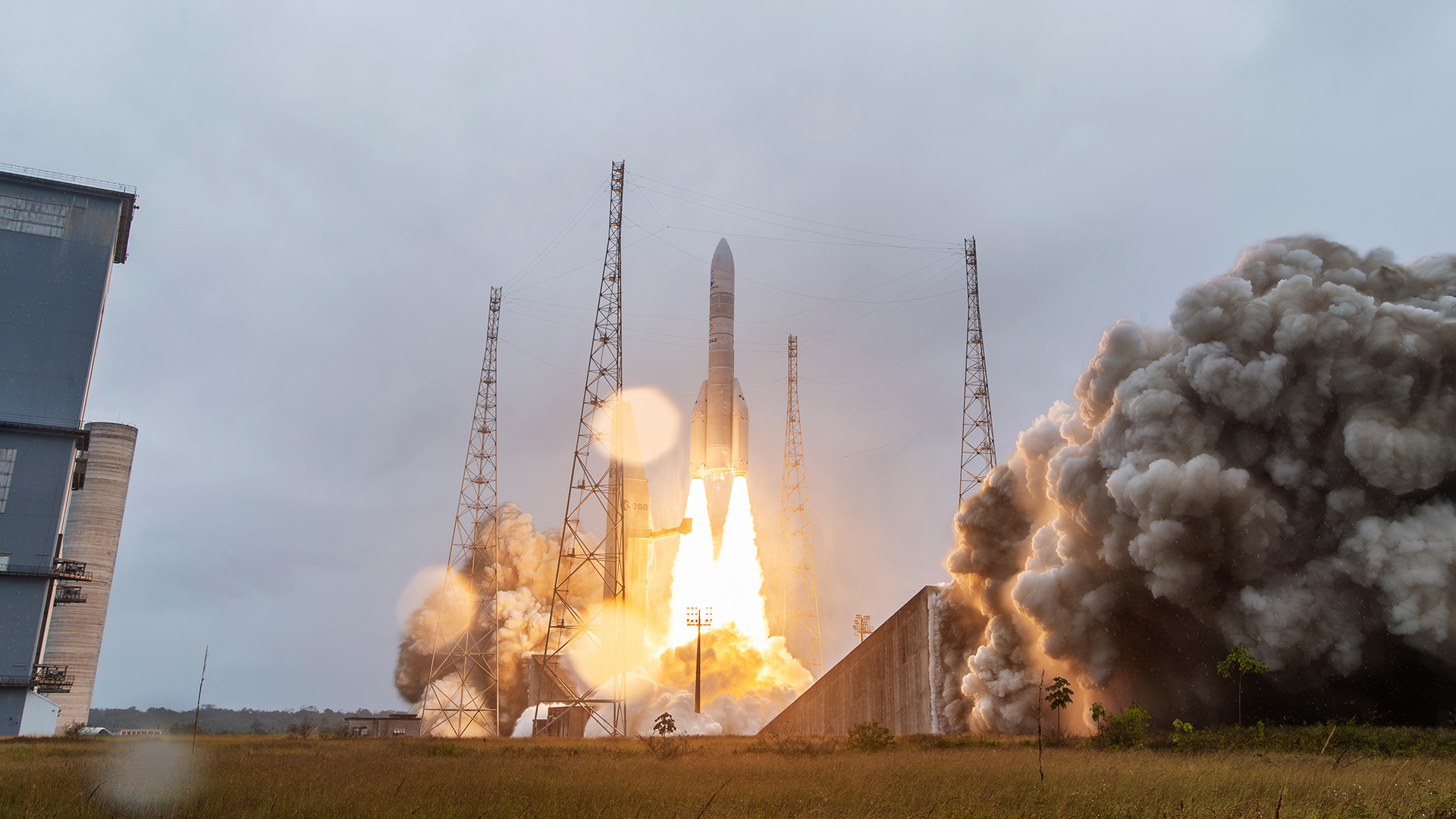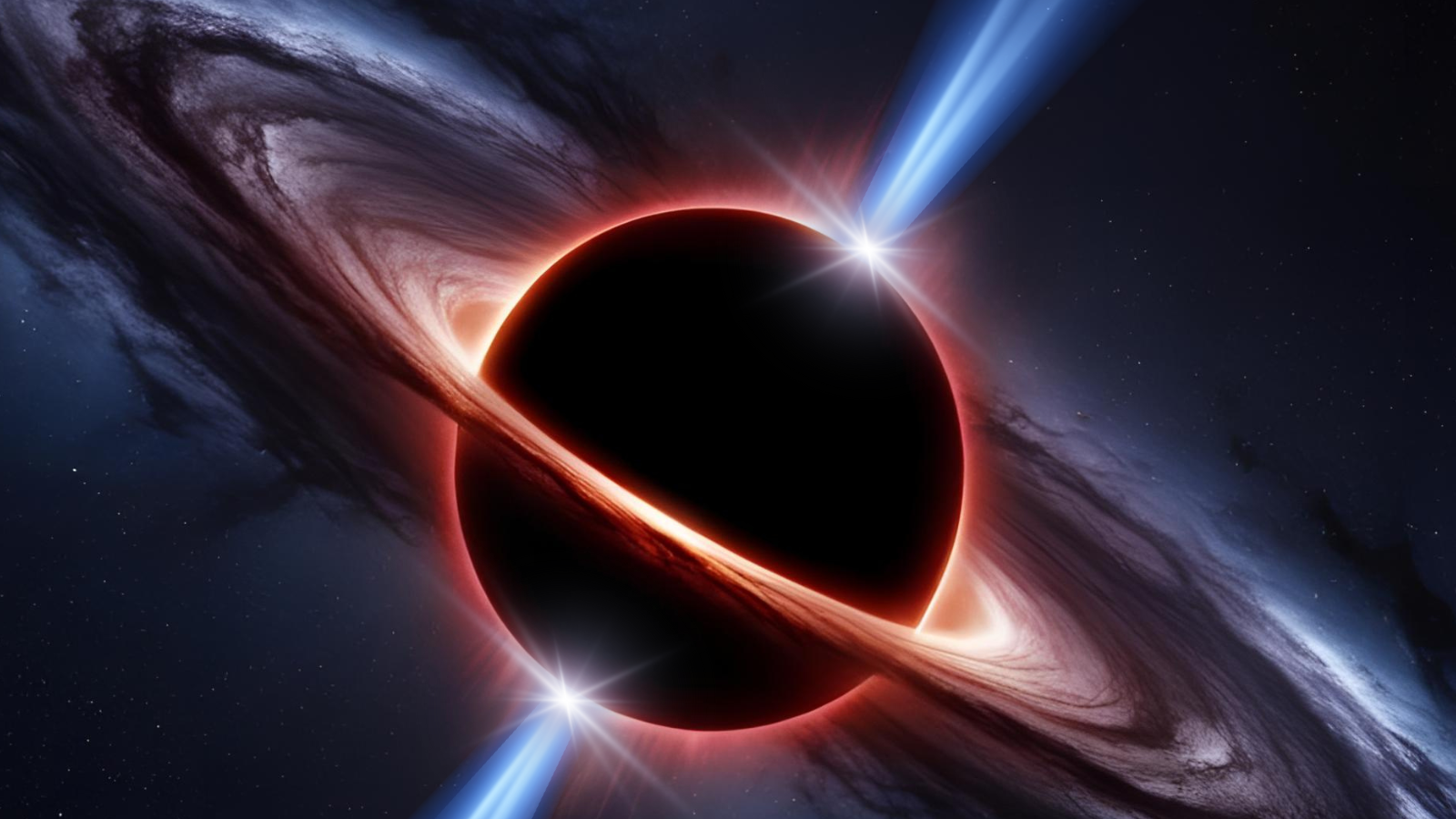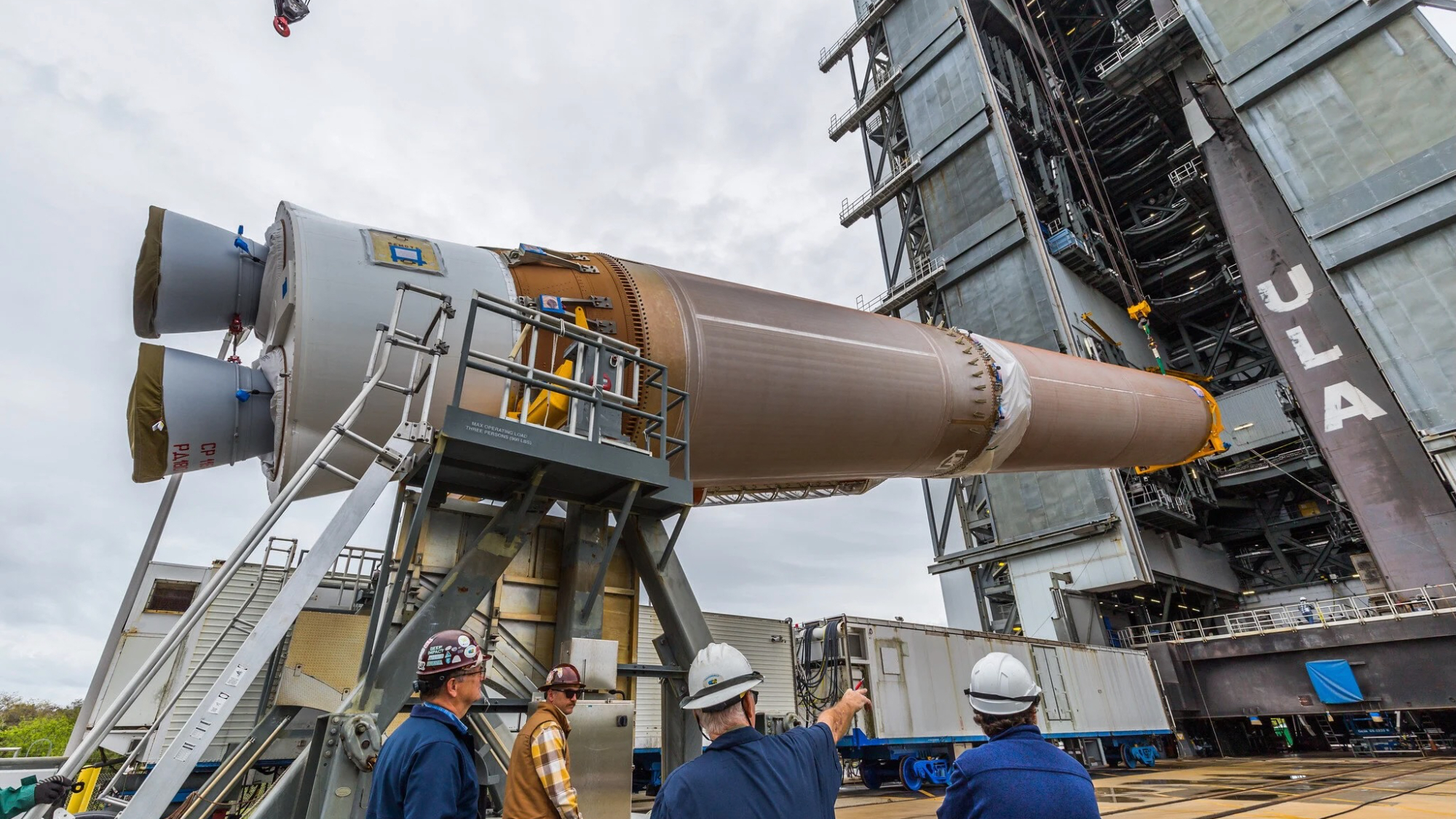Kepler-62f: A Possible Water World
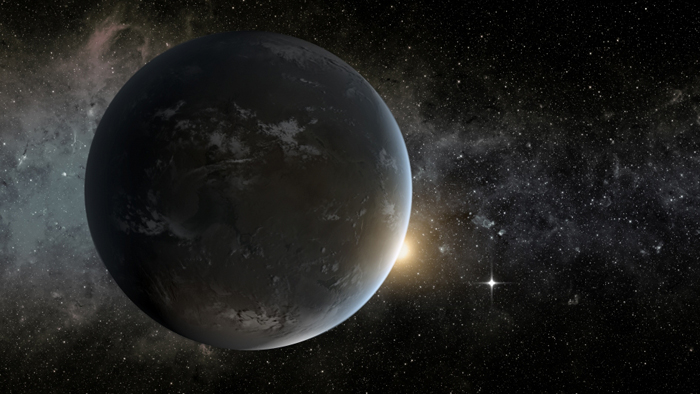
Kepler-62f is potentially an Earth-like planet about 1,200 light-years from our planet. The world is only 1.4 times bigger than Earth and is in orbit around a star that is somewhat dimmer and smaller than the sun. It orbits in what is believed to be the habitable region of its star.
The planet was announced in 2013 as part of a larger discovery of seven exoplanets announced around the stars Kepler-62 and Kepler-69. Another notable discovery at the same time was Kepler-62e, which is also close to Earth's size (at 1.6 times the radius) and in the habitable zone.
Separately, a modeling study of Kepler-62e and Kepler-62f suggested that the planets would likely be engulfed in water, which could lead to life that is very different than our own.
"There may be life there, but could it be technology-based like ours? Life on these worlds would be under water with no easy access to metals, to electricity, or fire for metallurgy," modeling lead author Lisa Kaltenegger, of the Max Planck Institute for Astronomy and the Harvard-Smithsonian Center for Astrophysics, said in a statement in 2013.
"Nonetheless, these worlds will still be beautiful blue planets circling an orange star — and maybe life’s inventiveness to get to a technology stage will surprise us," she added.
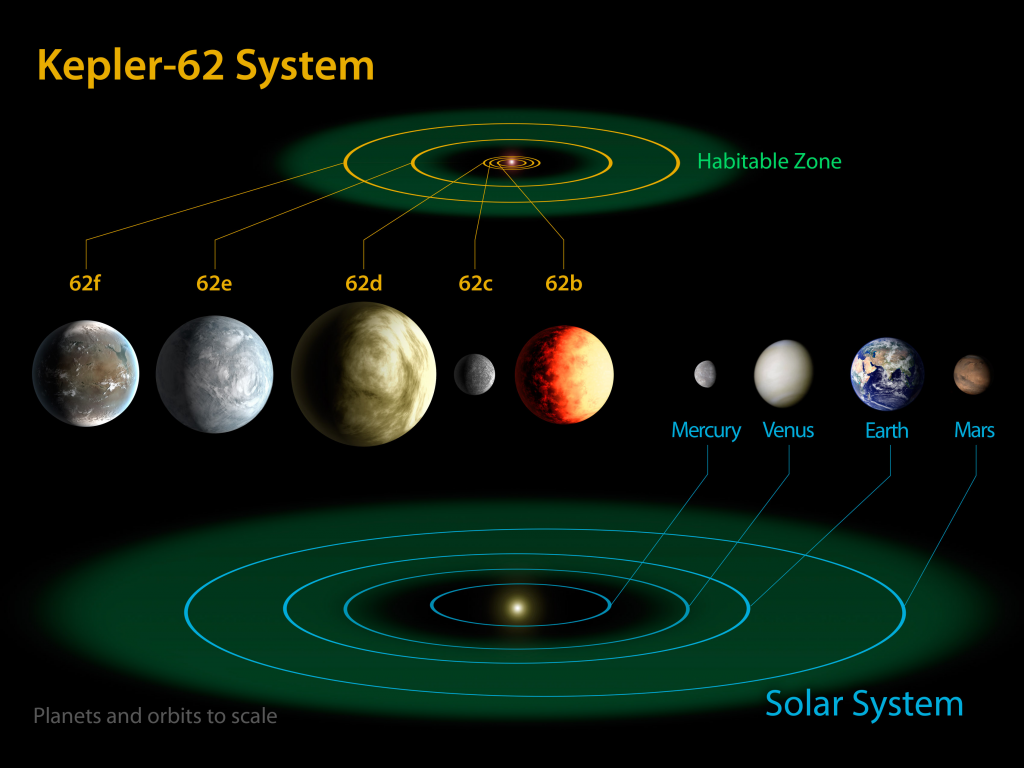
Discovered by space telescope
Kepler-62f was discovered using the Kepler Space Telescope, an observatory that has discovered thousands of exoplanets since launching in 2009. [Related: NASA Finds 1,284 Alien Planets, Biggest Haul Yet, with Kepler Space Telescope]
The planet makes a complete circle of its red dwarf star every 267 days and orbits at about the equivalent distance of Venus to the sun in our own solar system. Although this puts the planet far closer to its star than Earth is to the sun, the red dwarf does not produce as much light. This means that the region around the star where planets could have liquid water is much closer than that of our own solar system.
Kepler-62f, however, is the farthest known planet in its system and may require quite a bit of cloud to insulate the planet and keep water above freezing. If that were the case, water would likely be there in abundance. Researchers pointed out that life on Earth itself was believed to have started in an aquatic environment.
"Look at our own ocean — it is just absolutely full of life," said Bill Borucki of NASA's Ames Research Center in Moffett Field, Calif., leader of the team that discovered the two exoplanets, in 2013. "We think, in fact, life [on Earth] might have begun there."
The key to a more advanced civilization, however, may lie in pockets of dry land. Technology (as we would understand it, at least) would be difficult to develop unless any alien creatures could work out of the water.
"We might not have gotten off four legs" if humanity's predecessors came to be on Kepler-62e or Kepler-62f, Borucki added in the interview. He said a human that somehow found him or herself on the Kepler-62f would have no trouble walking around, as the gravity is gentle.
Breathing, however, would be another matter. The soupy atmosphere of Kepler-62f could prove difficult for humans to breathe, unless they were to come with special equipment, researchers pointed out.
"If you want to write a science-fiction story, and you land on both [62e and 62f], at least be sure that on [62]f you don't want to take your mask thingy off," Kaltenegger said.
Limits to habitability
Kepler-62f's habitability was further explored in a presentation at the American Astronomical Society conference in 2016, with research led by postdoctoral fellow Aomamwa Shields of the University of California, Los Angeles. The researchers simulated how Kepler-62f would have interacted with its star and suggested that in certain situations, the planet could always have one side facing its sun. This would be due to tidal interactions with the star that would eventually synchronize the planet's rotation with its orbit.
The researchers also did simulations using a global climate model to see how habitable Kepler-62f would be with different amounts of carbon dioxide in its atmosphere. At a lower limit of 3 bars (a bar is a metric unit for measuring atmospheric pressure), and if the planet's rotation is not locked with its orbit, the researchers suggested the planet would only be warm enough for liquid if the planet is highly eccentric. "A climate similar to modern-day Earth is possible for the entire range of stable eccentricities if atmospheric CO2 [carbon dioxide] is increased to 5-bar levels," the researchers added.
A 2014 paper in the Proceedings of the International Astronomical Union, led by graduate student Emeline Bolmont of Bordeaux University, further suggested that tides are needed to keep the Kepler-62 system and all of its planets stable. Without the effect of tides, the system would be destabilized in just a few million years. With tides, the planets remained very stable for the 30 million years of the simulation.
In 2016, researchers led by project fellow Rajib Mia of the Indian School of Mines published a paper in the Monthly Notices of the Royal Astronomical Society running calculations and confirming previous reports that Kepler-62e and Kepler-62f are likely in a rough 2:1 orbital resonance, meaning that when Kepler-62e goes twice around its sun, Kepler-62f goes around once. These types of orbital resonances are common in our own solar system, for example among moons of Saturn.
Additional resources
Join our Space Forums to keep talking space on the latest missions, night sky and more! And if you have a news tip, correction or comment, let us know at: community@space.com.
Get the Space.com Newsletter
Breaking space news, the latest updates on rocket launches, skywatching events and more!

Elizabeth Howell (she/her), Ph.D., was a staff writer in the spaceflight channel between 2022 and 2024 specializing in Canadian space news. She was contributing writer for Space.com for 10 years from 2012 to 2024. Elizabeth's reporting includes multiple exclusives with the White House, leading world coverage about a lost-and-found space tomato on the International Space Station, witnessing five human spaceflight launches on two continents, flying parabolic, working inside a spacesuit, and participating in a simulated Mars mission. Her latest book, "Why Am I Taller?" (ECW Press, 2022) is co-written with astronaut Dave Williams.
